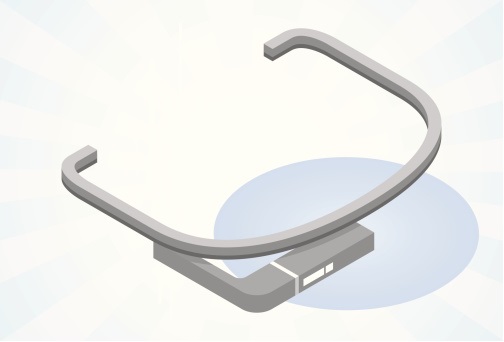Apr 14, 2025
Apr 14, 2025
by Sujata C

Google is encouraging surgeons, engineers, policemen and other professionals to wear Google Glass to work, despite the many misgivings that people have about this new innovation - smart glasses. Won’t it distract me from my work? Does it mean the end of all privacy? Will people use it to secretly record me? Are we going to have more accidents on the roads and elsewhere? Is it just another toy to play with or will it make a meaningful difference to my life and the workplace.
Gartner says that the use of smartglasses has the potential to improve worker efficiency in vertical markets such as manufacturing, field service, retail and healthcare.
"Smartglasses with augmented reality (AR) and head-mounted cameras can increase the efficiency of technicians, engineers and other workers in field service, maintenance, healthcare and manufacturing roles," said Angela McIntyre, research director at Gartner. "In the next three to five years, the industry that is likely to experience the greatest benefit from smartglasses is field service, potentially increasing profits by $1 billion annually. The greatest savings in field service will come from diagnosing and fixing problems more quickly and without needing to bring additional experts to remote sites."
Smart glasses are expected to be useful in heavy industry, such as manufacturing, oil and gas, because the AR glasses enable on-the-job training of workers in how to fix equipment and perform manufacturing tasks. The impact is likely to be medium for mixed industries, such as retail, consumer packaged goods and healthcare, where the benefits may mostly be looking for information via a visual search.
The weightless industries, such as insurance, media and banking will likely experience a low impact from smart glasses. However, there are still potentially beneficial uses for smart glasses. Insurance agents, for example, may use smartglasses to video property that has been damaged and then check on the replacement value of items they have identified using a visual search. Financial institutions and the media will use smartglasses to deliver alerts via subscription services to professionals who need up-to-the-minute information.
Gartner expects some of the basic functions of smartglasses to help bring added efficiency to the enterprise. How-to instructions and illustrations on the smartglass displays enable workers to perform tasks even if they do not remember all the procedures. The virtual assistant on the smartglasses could serve as an interactive, hands-free "how-to" manual. Thus, workers may successfully complete tasks they have little experience doing. In addition, workers with mild memory issues or cognitive impairment may find smartglasses useful tools for remembering how to complete tasks.
Video collaboration with experts in remote locations results in faster repairs and saves the expense of flying an expert to the site to help. Employees at remote sites can communicate and share video of what they see with experienced workers to get advice on how to diagnose and fix problems. In this way, enterprises can improve the cost-effectiveness of their field service and remote operations by employing a larger ratio of less-experienced workers to experienced ones or specialists, thus saving labor costs.
Google has also taken the trouble of putting out a long list to bust some of the myths that have come to surround the smartglasses in its relatively short existence. It suggests that Google Glass is for everyone not just tech worshipping geeks. The company is continually taking feedback and refining the product before releasing it in the mass market. The wearer’s security on the device is their priority and the camera will not be in on-mode always simply because battery life is very limited.
So now that computers have officially entered the accessories section of our wardrobes in the form of smartglasses, we can soon look out for dress designers who will soon fashion outfits that go with it. The future is here!
Image (c) gettyimages.com
29-May-2014
More by : Sujata C